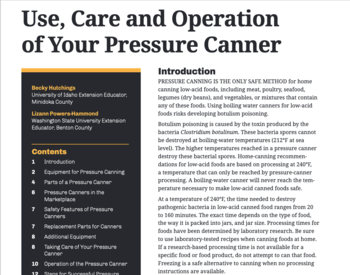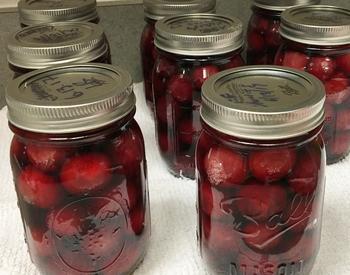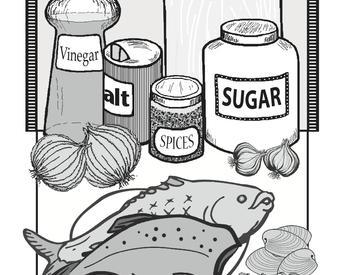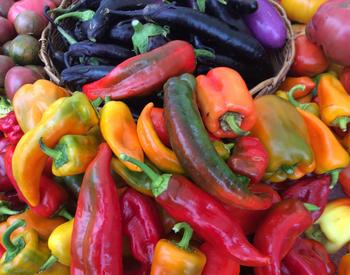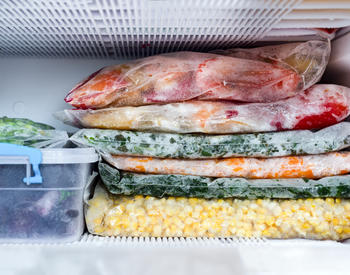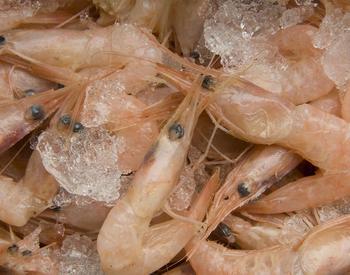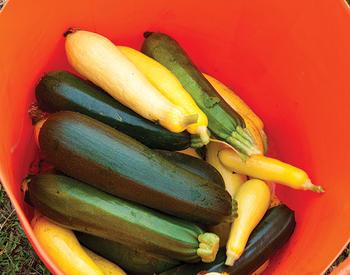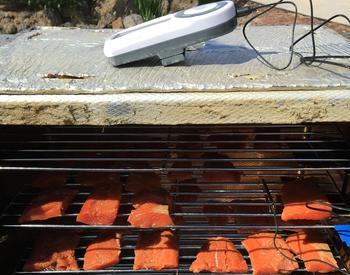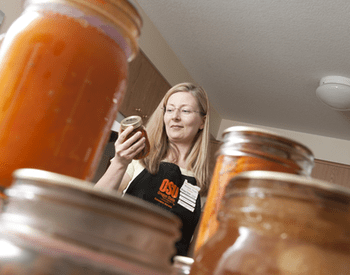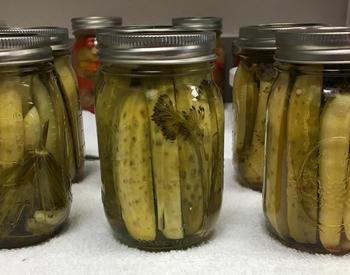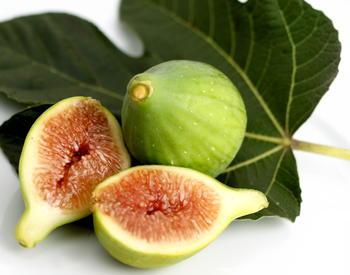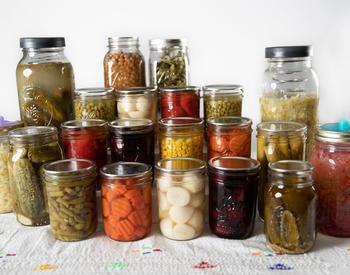Download this publication as a PDF
Quick facts
- The leaves and seeds of herbs are used to flavor foods.
- The flavor comes from oils in the cell walls of the plants. Chopping or grinding breaks the cell walls and releases the flavor.
- Dried herbs can be stored effectively up to one year in a cool, dry, dark place.
- Drying herbs at too high a temperature can cause flavor loss.
Harvesting herbs
The best time to harvest herbs for drying is just before the flowers first open (the bursting bud stage). Gather herbs in the early morning after the dew has evaporated to minimize wilting. Label the herbs to be dried when you pick them, because after they are dried many look alike. Rinse the herbs in cool water and gently shake to remove excess moisture. Discard all bruised, soiled, or imperfect leaves and stems.
Drying herbs
There are several methods that can be used for drying herbs successfully. It’s important to keep the temperature below 100º F. High temperatures will cause flavor loss.
Dehydrator
Herbs will dry quickly in a dehydrator and will produce high-quality herbs. Place the herbs on the dehydrator trays covered with a fine screen to catch the dried leaves if they fall from the stems. Preheat the dehydrator to 90–100º F. Dry 1–3 hours or until the herbs are dry and crumble easily.
Microwave drying
Microwave ovens are a fast way to dry herbs if you only have a small quantity. Never dry more than 1–2 cups at a time. Layer the herbs in a single layer between two sheets of plain white paper towels.
Note: Do not use recycled paper towels; they often contain scraps of metal that can arc and catch on fire.
Check your owner’s manual for recommended times for drying herbs. A general guide for drying 1 cup of herbs is to cook on high for 1–2 minutes in 700–1,200 watt ovens; 2–4 minutes in 650–700 watt ovens; and 3–6 minutes in 500–600 watt ovens. Stir the herbs every 30 seconds after the first minute until almost dry, and then let them finish drying at room temperature. Herbs commonly dried in the microwave are parsley, celery leaves, chives, thyme and sage.
Air drying
For hardy herbs
The sturdier herbs such as sage, thyme, rosemary, summer savory and parsley are the easiest to dry. They can be tied into small bundles and air-dried. Air drying outdoors is often possible; however, better color and flavor retention usually results from drying indoors.
Tender-leaf herbs
Basil, tarragon, lemon balm and the mints have high moisture content. Tie the herbs together in small bunches and hang inside a paper bag with vent holes cut in the top and side of the bag. Close the top with a rubber band. Place where air currents will circulate through the bag. Any leaves and seeds that fall off will be caught in the bottom of the bag. A good place to hang herbs to dry is in an attic, kitchen or any location that is warm and where there is air circulation.
The herbs can also be placed on a layer of paper towels on a tray to dry. It will usually take 5–10 days to air-dry. This works well for drying leaves such as bay, mint and sage leaves. This method will dry the leaves flat and keep the color. Sun drying is not recommended because it will affect the color and flavor of the herb.
Test for doneness
Herbs are dry when they crumble easily between the fingers. The stems should be brittle and break when bent and the leaves and seeds should fall from the stems. Dried leaves can be left whole and crumbled as needed or they can be coarsely crumbled before storing.
Storage
Place dried herbs in an airtight container and store in a cool, dark, dry location for optimum flavor and color. For best flavor, use within six months to one year. Crushing or grinding herbs and seeds for storage increases the loss of aroma and flavor. Whole seeds and leaves have the longest shelf life; ground has the shortest. For the fullest flavor, crush or grind just before using.
Using herbs
Herbs should be used to complement the flavor of food. Generally, ¼ teaspoon of dried herbs is adequate for a four-serving recipe. To substitute one for another, use these amounts as guidelines: ¼ teaspoon powdered herb = 1 teaspoon dried herb = 1 tablespoon chopped fresh herb.
For cooked foods, add herbs during the last part of the cooking time to get the most flavor. Herbs in uncooked foods such as salad dressings, dips and spreads will need time to blend flavors, so add them as far in advance of serving as possible.
Related Articles
Source: OSU Master Food PreserverProgram

